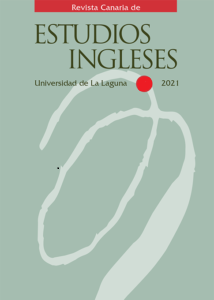Bodies on Display: Affective and Spatial Practice in Zoë Strachan's Negative Space
Abstract
Drawing from space and affect theory, the aim of this article is to analyse the representation of the female body in Zoë Strachan’s novel Negative Space. First of all, it studies the construction of its protagonist’s “negative” body, as well as the strategies she develops in order to cope with the void of positive representation in which she feels immersed. Secondly, it focuses on her affective practices in public and private spaces. In order to do so, it concentrates on the alienation and dislocation caused by her embodiment of the city of Glasgow, to then examine her highly sexualised bodily practice of the domestic spaces that are central in the text, chiefly her family home and the flat she used to share with her now deceased brother Simon. Finally, it revises her translocation in the Orkney Islands, together with the alternative spatial and emotional attachments she creates in her journey towards an eventual bodily reintegration into the rhythms of socialisation.



